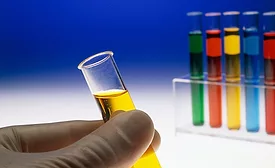Adhesives and Sealants Topics
Evonik Silanes Appoints Lintech as Distributor
Lintech will have distribution for 14 states.
January 10, 2019
Vee Bee Filtration to Relocate
The Vee Bee Technology Centre will be located in Halesowen in the West Midlands, UK.
January 10, 2019
Testing Scratch Resistance Beyond the Surface
New tests do more than scratch the surface of automotive coatings.
January 9, 2019
Ask Dr. Dave
Ask Dr. Dave: Can you use adhesives for bonding plastic plumbing pipes?
Dave Dunn's January 2019 column.
January 9, 2019
R.D. Abbott Signs Distribution Agreement with ARLANXEO
Prior to this revised distribution agreement, R.D. Abbott represented ARLANXEO’s HPE product lines in the western U.S.
January 9, 2019
RPM Second Quarter 2019 Sales up 3%
Fiscal 2019 second-quarter net sales were a record $1.36 billion.
January 9, 2019
RadTech Announces President, New Board Members
JoAnn Arceneaux of Allnex USA Inc. has been elected as incoming president.
January 8, 2019
Rzasa Appointed Maroon Group Operations Manager
Rzasa brings over 30 years of experience as an operations professional.
January 8, 2019
Keep the info flowing with our newsletters!
Get the latest industry updates tailored your way.
JOIN TODAY!Copyright ©2025. All Rights Reserved BNP Media.
Design, CMS, Hosting & Web Development :: ePublishing









